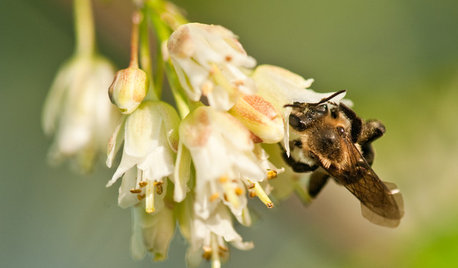brown dead branches
alan8
16 years ago
Related Stories

DINING ROOMSNew This Week: Proof the Formal Dining Room Isn’t Dead
Could graphic wallpaper, herringbone-patterned floors, wine cellars and fire features save formal dining rooms from extinction?
Full Story
DECORATING GUIDES12 Deadly Decorating Sins
Are your room designs suffering from a few old habits? It may be time to change your ways
Full Story
DECORATING GUIDESBranches and Twigs for More Than Just Decor
Think beyond the vase with twigged-out railings, gates, room dividers and more
Full Story
REMODELING GUIDESWood Home Exteriors Branch Out
From rough-hewn planks to sleek screens, wood house exteriors now have a forest of options
Full Story
GARDENING GUIDESGreat Design Plant: Staphylea Trifolia Shines in the Shade
Plant American bladdernut for 3 seasons of interest: spring flowers and striped brown branches and bladder-like seedpods in fall and winter
Full Story
FEEL-GOOD HOMEYour Best Winter Accessory for the Kitchen
Flowers and foliage will bring cheer to your kitchen even in the dead of winter
Full Story
BLACKHow to Decorate With Brown, Black — or Both
Black is best for engineered materials; brown works great for textures — and more designer tips for working with these two classic colors
Full Story
GARDENING GUIDESGot Frost-Damaged Plants? How It Happens, and When and How to Prune
Crispy brown leaves are a sure sign that Jack Frost has been to your neighborhood
Full Story
HOLIDAYSHouzz Call: Show Us Your Christmas Tree!
How lovely are your branches? Post a picture and share your stories
Full Story
FLOWERSRudbeckia Mania: Go Beyond Black-Eyed Susan in the Garden
Branch out from typical nursery fare, with lesser-known Rudbeckia species that have delightfully unexpected features
Full StoryMore Discussions






digdirt2
HoosierCheroKee
Related Professionals
Birmingham Landscape Architects & Landscape Designers · Miller Place Landscape Contractors · Oxnard Landscape Contractors · Riverview Landscape Contractors · South Hackensack Landscape Contractors · Irvington Landscape Contractors · Abington General Contractors · Clive General Contractors · Gallatin General Contractors · Seguin General Contractors · Spencer General Contractors · West Melbourne General Contractors · Dorchester Center Decks, Patios & Outdoor Enclosures · Alvin Decks, Patios & Outdoor Enclosures · Chicago Decks, Patios & Outdoor Enclosures